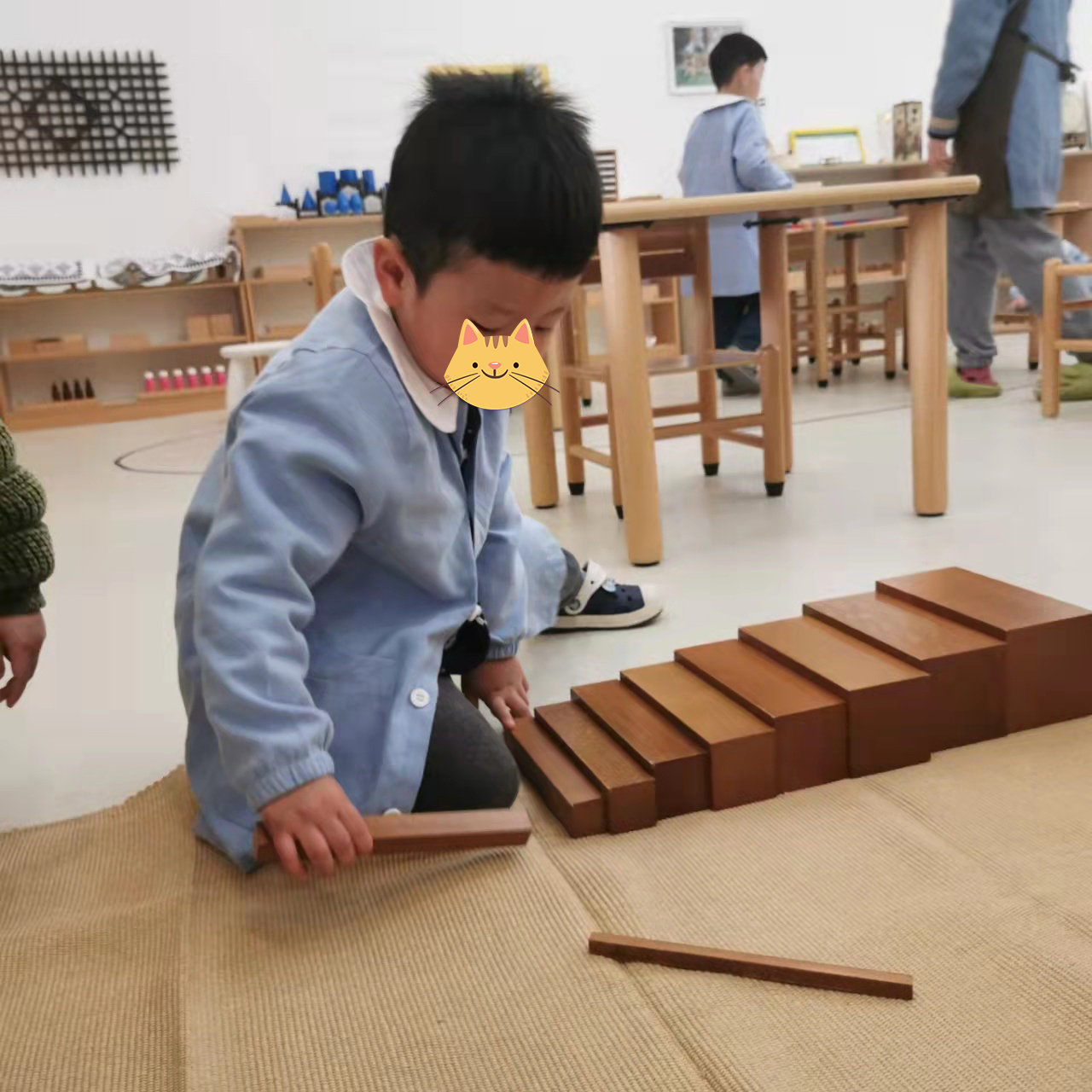在人的认知发展过程中,儿童唯一能依靠的就是感官,假如闻不到、看不到、听不到、摸不到,人就很难学会世界上各种物质的特质,他的知识领域就有所限制。
——玛丽亚·蒙特梭利
In the process of human cognitive development, the only thing children can rely on are their senses. If one cannot smell, see, hear or touch, it is difficult for one to learn the characteristics of various substances in the world, and his/her field of knowledge is limited.
——Maria·Montessori
儿童有着他自己的人格,他自身具有创造精神的美和尊严。在蒙特梭利教育中,感官区教育就是孩子运用感觉器官无限探索的地方;“粉红塔”与“棕色梯”都是非常经典的教具。
Children have their own personalities, their own creative spirit of beauty and dignity. In Montessori education, sensory area of a Montessori classroom is a place where children can develop their cognitive functions in a natural way, while “Pink Tower” and “Brown Stair” are two traditional materials in in this area.

粉红塔让孩子学会从大到小的排序,发展手眼协调能力。棕色梯是从粗到细的排序,发展孩子的肌肉控制力,他们都是为数学做间接预备。
Pink Tower allows children learn to rank from large to small and to develop hand-eye coordination. Brown Stair allows children learn to grade from thick to thin and to develop their muscle control. Both of these two Montessori materials are indirect preparation for children’s mathematical skills.
那如果孩子们将“粉红塔”和“棕色梯”两样经典教具碰撞在一起会擦出什么样的火花呢?
So what kind of spark does it create when we combine “Pink Tower” and “Brown Stair”?

孩子们的创造能力和思维能力你能理解吗?在他们建构粉红塔和棕色梯的过程中,通过造型的变化和颜色的对比,同时做配对和序列的练习,加深对渐变的分析能力…
In the process of construction, children can enhance the ability to analyze gradients by the changing shapes and colors of “Pink Tower” and ‘Brown Stair”, as well as by doing matching and ordering exercises.

无论是成人还是孩子都是一样的,学习一个新的知识或者事物的过程,都需要我们反复的练习,使其不仅能更加娴熟地使用双手,更是对感官的刺激。
No matter adults or children, the process of learning a new knowledge requires repeated practice, so that we can use our hands more skillfully and stimulate our senses.
我们能做的就是尊重,尊重孩子从内心发出的声音,给予孩子适合的环境、更多的时间和自由,相信会让成人别样的惊喜。
What adults can do is to respect children’s needs and their voices from heart, provide children an appropriate environment, more time and freedom. We should always believe that children will surprise us.